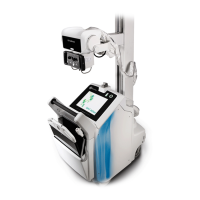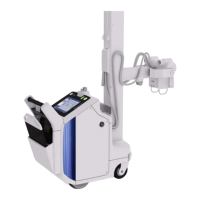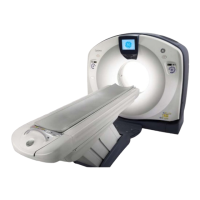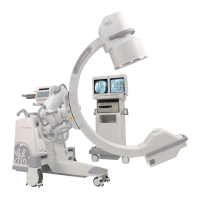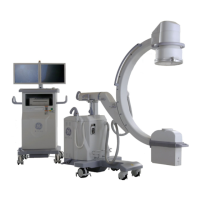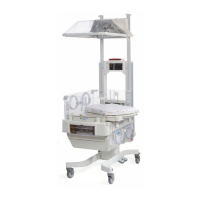Chapter 10: Image Acquisition
5495975-1EN Rev.9 10-23
© 2013-2017 General Electric Company. All rights reserved.
Conduct an Emergency Exam
Emergency Exam is a function that allows a patient to be x-rayed without selecting the patient from the
Worklist or adding the patient to the Worklist.
Figure 10-17 Emergency Exam button
Emergency Exam is used in the following situations:
Medical emergency – The patient needs an x-ray taken immediately.
No patient information available – There is no patient information to enter due to the patient’s medi-
cal condition. For example, the patient was found unconscious with no identification.
When the [EMERGENCY EXAM] button is clicked, the system assigns a unique tracking number as the
Patient Name. The tracking number is the word “NEW” followed by a date and time stamp of the second
the Emergency Exam button was clicked. For example: NEW070422140345. In this example, the number
sequence means that the exam was initiated in year 07, month 04, day 22, hour 14, minute 03, and sec-
ond 45.
The tracking number is used as the Patient Name on image annotation and as the Patient ID.
Note: When the patient information becomes available, images can be copied into the appropriate
Worklist selection. The selection can be populated to the Worklist either by HIS/RIS or manual
entry. Refer to Chapter 12: Image Management-Open Exams and Images (p. 12-7) for more infor-
mation.
Once initiated, an emergency exam is conducted the same way as any other exam.
Follow this process to conduct an emergency exam.
1. Click [EMERGENCY EXAM] from the bottom left of the Worklist.
The Select Protocols screen appears. Refer to Select or Change Protocols
(p. 10-12) for more infor-
mation.
2. Select the protocols for the exam.
3. Click [ACCEPT].
The Acquisition screen appears.
4. Select the protocol to perform from the Protocol List.
5. Acquire images. Refer to Conduct a Table Exam
(p. 10-15), Conduct a Wallstand Exam (p. 10-17), or
Conduct a Table Top Exam
(p. 10-19) for more information.
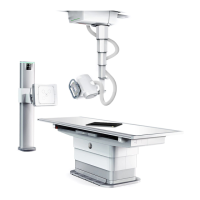
